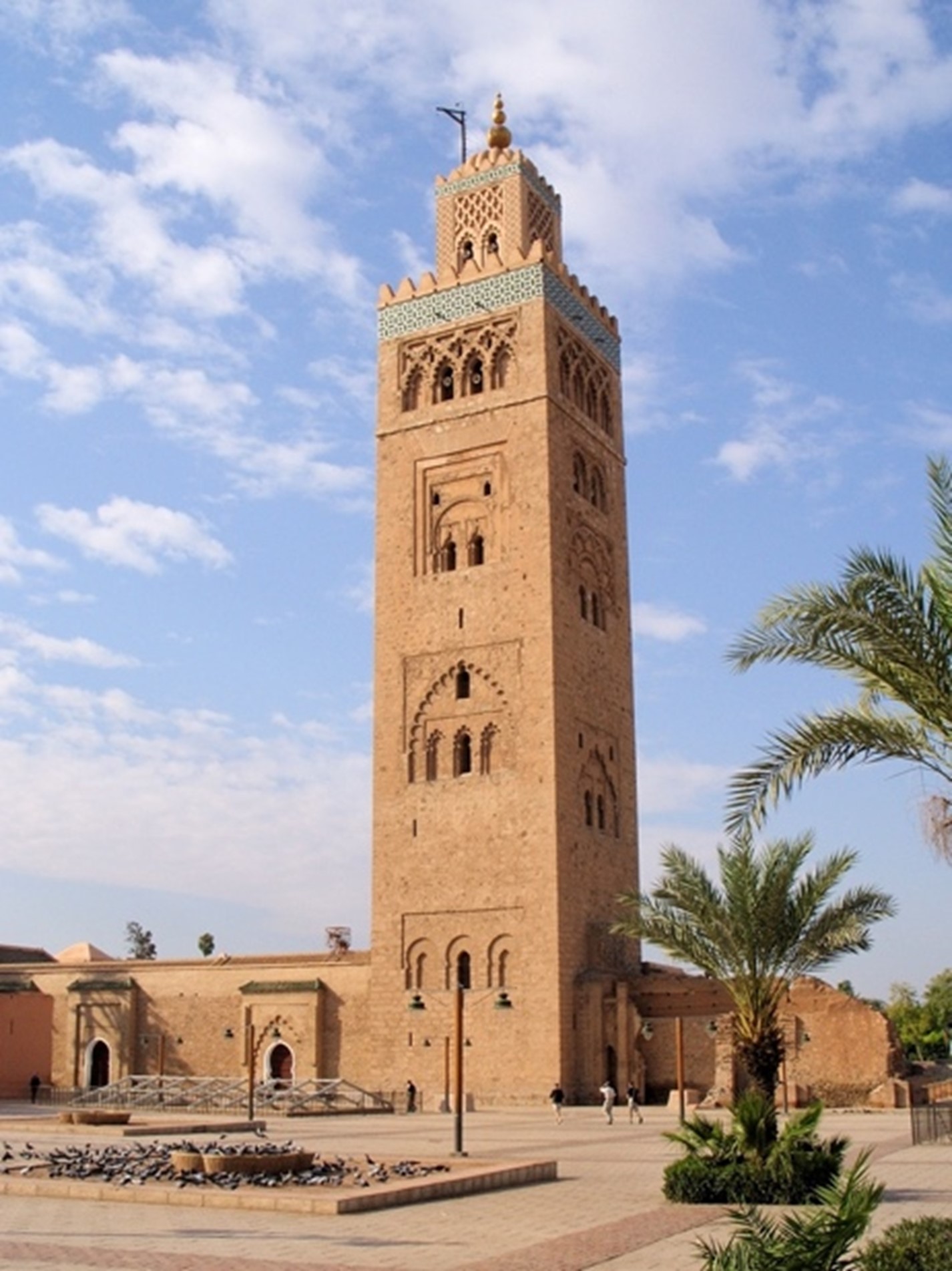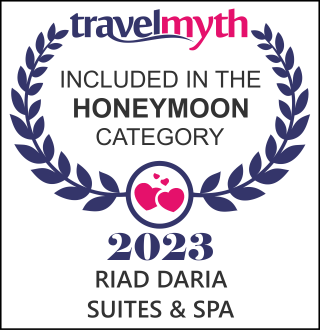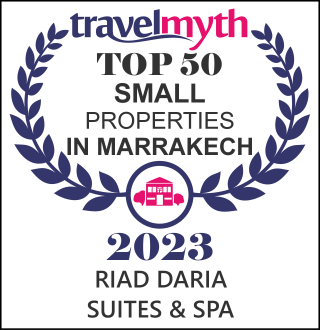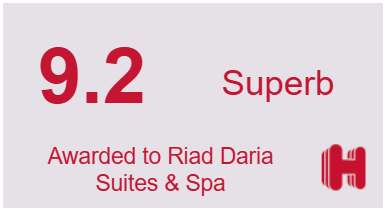We offer guided city tours (available in English, French, Italian and German).
Prices are as follows:
1/2-day tour (4 hours) for 2 people = 700 Dhs.
1-day tour (8 hours) for 2 people = 1,200 Dhs.
These prices are multiplied by 2 if there are more than 2 people.
When you're with the guide, you can tell him if you have any monuments you'd like to see, specific places to visit or anything else. He's here to listen and help you.
Riad Marrakech
Museum of Confluences Dar El Bacha
Entrance fee: 60 Dirhams
Riad Marrakech
Majorel Garden
Open every day
From 8 to 18 hours
Entrance fee: 150 Dirhams (children: -10 years free / 10 + 75 Dirhams)
It is MANDATORY to book your tickets online
see the following link: https: //tickets.jardinmajorelle.com/visite
useful information: https: //www.jardinmajorelle.com/
Riad Marrakech
Yves-Saint-Laurent Museum
From 8 a.m. to 6 p.m., EXCEPT ON WEDNESDAY
Entrance fee: 130 Dirhams (children: -10 years free / 10 + 65 Dirhams)
All useful information directly on the museum’s website: https: //www.museeyslmarrakech.com/le-musee/
You can combine the Jardin Majorel and the Yves-Saint-Laurent museum Entrance fee: 200 Dirhams (children: – 10 years free / 10 years + 100 Dirhams)

Riad Marrakech
The Secret Garden
– February and October: 9:30am – 6:30pm.
– From March to September: 9:30am – 7:30pm.
– From November to January: 9:30 am – 6 pm.
Entrance fee: 80 Dirhams
Address: Rue Mouassine 121, Marrakech medina
The Secret Garden opens to the public for the first time in its history. The origins of the complex date back to the time of the Saadian dynasty, more than four hundred years ago.
Rebuilt in the mid-nineteenth century by an influential Atlas caïd, the Secret Garden has been the home of some of the highest political figures in Morocco and Marrakech.
The Secret Garden, which can be fully appreciated today thanks to its recent restoration, is part of the great tradition of Arab-Andalusian and Moroccan palaces. The visitor can discover the gardens and the buildings that make it up and that constitute exceptional testimonies of Islamic art and architecture.
Riad Marrakech
Koutoubia Mosque
Without any doubt, the most essential religious building of Marrakech.
Why is this? First of all, locally, because Moroccans, who are very religious, turn to it several times a day during the call to prayer.
In addition, for tourists, the Koutoubia is often recommended for repercussions and orientation in the city!
Built in the 12th century under the orders of Sultan Abdelmoumen (Almoravid dynasty), the Koutoubia -meaning “The Mosque of the Booksellers”- takes its name from its former location in the souk of the manuscript merchants!
The religious building, built in a rather autere style, is composed of a large courtyard, a prayer hall, the qibla wall (indicating the direction of orientation for prayer) and the minaret (the tower used for the call to prayer) reaching 77 meters high!
During the hours of prayer, do not be surprised to see Moroccans abruptly stop their current activities to turn to the Koutoubia and practice their religious exercise.
Visitors are not allowed to enter the mosque, which is reserved for the faithful. Nevertheless, you will be able to approach the latter to admire its Spanish-Moorish architecture.

Riad Marrakech
The Bahia Palace
Entrance fee : 70 Dirhams
Opening hours: 8:00-17:00
Originally built for the personal use of Si Moussa, grand vizier of the sultan, a former slave who rose through the ranks, the Bahia Palace was soon occupied by his son Bou Ahmed. He came to power underhandedly in 1894 and managed to control the state completely until his death in 1900. It was during the reign of Bou Ahmed that the brilliance of the Bahia Palace was really enhanced by the addition of lush gardens, the small riad surrounding the private gardens (which visitors now walk through as soon as they enter the palace) and each of the rooms decorated in a truly elegant Moroccan style – carved stucco and cedar wood decorating each room.
The Bahia Palace houses council rooms with impressive zellig fireplaces, parquet floors and painted cedars, a large riad surrounded by citrus trees and the courtyard of honor built during the reign of Si Moussa. The palace was also the residence of Bou Ahmed, his four wives and several concubines. Although the harem, as it is often called, is off limits to visitors, you can visit the traditional-style gardens that are filled with orange trees and splashing fountains with living quarters and apartments, including that of his wife Lalla Zinab. Zellige tile fireplaces and floors and colorful stained glass windows create colorful patterns in the afternoon sun, and beautifully painted and carved cedar wood are just some of the interesting features of his wife’s apartment.
After the death of Bou Ahmed in 1900, it is said that the palace was ransacked and all the valuables were taken away. With the arrival of the French in the early 1900s, the inhabitants were forced to move to make way for the resident general. In her book In Morocco, Edith Wharton describes her stay in Morocco during the years of the Protectorate. A must-read book in Marrakech for those who want to know more about the Bahia Palace.

Riad Marrakech
Saadian Tombs
Entrance fee : 70 Dirhams
Rue de la Kasbah – Marrakech
The Saadian Tombs are a historic royal necropolis in Marrakech, Morocco. They date from the time of the Saadian dynasty, and in particular from the reign ofAhmad al-Mansur (1578-1603). They are located immediately south of the Kasbah mosque, inside the royal district of the city’s kasbah (citadel). Because of the beauty of their decoration, they are a major attraction for visitors to the ochre city.
Riad Marrakech
The Gardens of Agdal
The Agdal gardens are the oldest gardens in Marrakech, designed in the 12th century under the reign ofAbd el-Moumen, an Almohad ruler.
These gardens touch the area of the Dar El Makhzen palace to the south. The first trees were planted in the 12th century by the Almohads. The current shape of the gardens and the surrounding walls only date from the 19th century. Pomegranate, orange and olive trees are irrigated thanks to several reservoirs filled with water from the High Atlas. At the edge of the Es Sala, the largest of the water basins, is the Dar El Hana, a palace with a panoramic terrace from which one can admire the High Atlas Mountains beyond the gardens. The word Agdal derives from the Berber language and means “closed meadow”.
Today, the gardens of Agdal extend over several kilometers south of the Royal Palace, this garden with vegetation more varied than those of the Menara, has several pavilions.
The Agdal Garden is located within the perimeter of the Medina of Marrakech, aUNESCO World Heritage Site.













